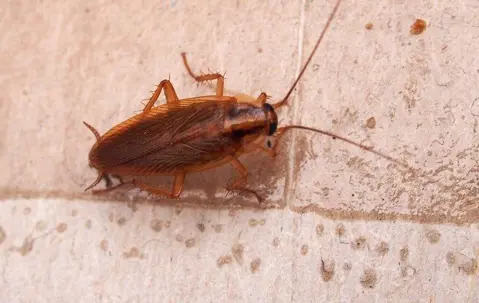There was a time when the German cockroach was the number 1 most difficult pest to control in commercial and residential structures; but with the development of cockroach baits, those disgusting little insects were pushed off their pedestals–at least for a while. We enjoyed more than a decade of limited success controlling these resourceful bugs. In fact, they were considered by many to be a second tier pest; but as you’ve probably noticed, that isn’t the case anymore. German cockroaches have taken back their position as top dog. So we’ve put together this list of facts to help pest management specialist learn more about why German cockroaches are such challenging pests.
- Reproduction rate. A single female can turn into an infestation of more than a thousand German cockroaches in less than a year. There are two ways to prevent a population increase. Make sure control products, such as baits, sprays, or nonchemical treatments, remain effective from one service to the next, or make sure scheduled services are frequent enough to outpace population growth.
- Protection. German cockroaches prefer tight, hard-to-get-at spaces where their back and their belly touch at the same time. Inspections must be thorough.
- Humidity. While German cockroaches can do well at normal temperatures and humidities, their ideal temperature is 85° to 95° F, and their ideal humidity is between 90 and 95%. In a structure, cockroaches will prefer to be in places where the heat and humidity are ideal. Look for them above refrigerators, stoves, warm pipes, and other items that put off heat or in places where a leak or moisture is present.
- Egg protection. Female German cockroaches carry their eggs on their bodies and drop them just before the eggs hatch. During this time, females will stay hidden deep in the cracks and crevices and protected voids, so be sure to apply insecticides deep into these areas and follow up with treatments no less than a month later to control newly-emerging nymphs.
- Eggs and insecticides. The eggs of German cockroaches are resistant to insecticides. Follow-up treatments will catch any recently hatched nymphs.
- Resistance to insecticides. Cockroaches can develop a physiological or behavioral resistance to an insecticide. It is important to periodically change the insecticides being used to counteract this resistance.
- Aggregation. It is important to find all locations of aggregation. If you miss one, you’re going to get a very unhappy phone call from your client.
- Dispersal. When treatment is applied, there will often be a dispersal. Be sure to treat rooms above, below, and adjacent to infested rooms.
- Threat avoidance. Some insecticides will act as repellents, driving roaches away before receiving a lethal dose. But if product is applied deep into cracks and wall voids, fleeing cockroaches will be unable to find a safe place to flee.
- Adaptation. If a threat is perceived, German cockroaches will respond by changing where they have been aggregating. Don’t make the mistake of focusing treatment on trouble areas alone.
Get in touch to schedule your no obligation inspection.
10 Facts That Make German Cockroaches Hard To Control in Indiana, Illinois & Kentucky
Extermination Services You Can Trust
